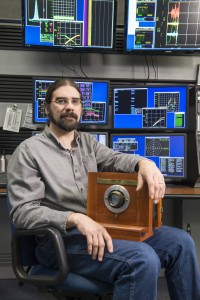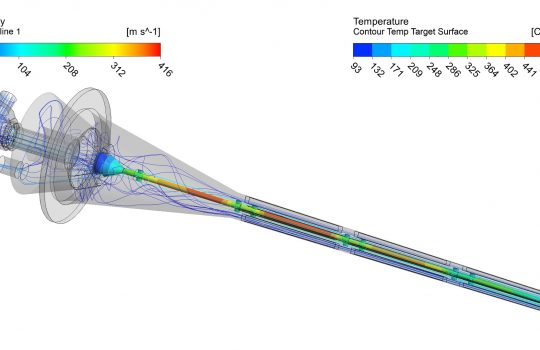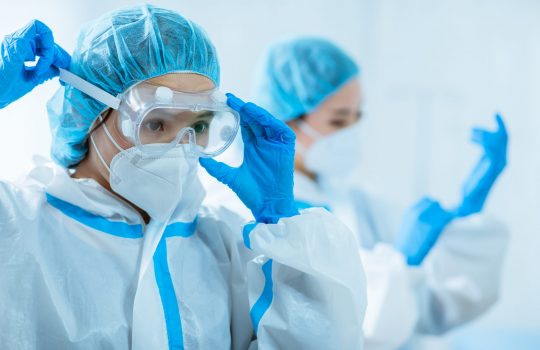
When Chris Olsen isn’t working in the Main Control Room, he’s attending to one of his many hobbies, including old photography. Photo: Reidar Hahn
How long have you been at Fermilab?
Almost 16 years.
What path led you here?
I have a degree in history. After working a couple of years outside of the lab — at a hardware store, as a prototyping machinist, driving a school bus — I decided I wanted to do something else. I’d worked at the campus particle accelerator lab all four years of college and had built a couple particle accelerators at home. I brought my own cyclotron to my interview here. I think they hired me to keep an eye on me.
What is your typical day here like?
Operators run the machines to provide beam as needed to the experiments. It’s a very catchall job. If anything goes wrong, we’re the first line of defense. At the beginning of a shift, we meet with the off-going crew chief and read a logbook for instructions. Then we go into the control room to get more specific information for whatever machine we’re taking over. Then we’ll sit there, answer phones and tune the machines. If something trips off we’ll either go and fix it or see if one of the techs can fix it.
What’s the most exciting part of your job?
I enjoy the interaction with people from all over. And I enjoy talking to tours. I got to speak with the remaining crew of the Enola Gay when they came through. As a historian, that was amazing. I also enjoy going out in the field to fix stuff. My forte is hardware.
You recently had some photographs in an employee art show. Can you tell me about your photography?
I’m a student of 19th-century photography. I do daguerreotypes and wet plate collodion, which are the two first photographic processes that were commercially successful. Being an operator gives me the very special privilege of taking my camera equipment into the accelerator complex and using this 150-year-old process to take pictures of it. I also do backstage concert photography and take pictures of Civil War reenactors. I used to do my own 18th-century reenactment, so I give these pictures to the Civil War reenactors as gifts.
Is there anything people might not know about you?
My friends call me the man of a thousand hobbies. I build medieval crossbows. I teach woodworking and blacksmithing at Four Winds Waldorf School. My kids go there. I have a hundred-year-old sock knitting machine that I make socks with. I’m restoring a 1923 Model T. Working here has actually allowed me to do all this. Talking with colleagues has expanded my creativity and artistic side.



